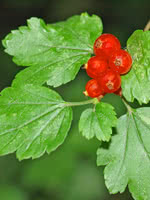Mon-Fri 9am - 5pm Mountain time
Washington Hawthorn vs Alpine Currant
Crataegus phaenopyrum
Ribes alpinum
CUSTOM GROW
NOT AVAILABLE THIS SEASON - MIGHT RETURN
Washington Hawthorn is an attractive ornamental shrub that is dense enough to plant as a privacy screen. It produces clusters of white blooms in late spring to early summer.
Washington Hawthorn's red berries last throughout winter, bringing squirrels and birds to your property. In the fall, its foliage turns beautiful orange, scarlet, or purple.
One of the most overlooked trees on the prairies. This tree is often used as rootstock, a wildlife attractor, or a boulevard hedge. Give this one a second look.
This species is also known as one of the more salt-tolerant species for those with saline soils.
Please note: this plant is poisonous to dogs.
Alpine Currant is a great shrub to plant along sidewalks, near building or at your property boundary as a hedge or accent species. It is widely used by commercial landscapers in parking lots and near buildings because of its hardiness, attractiveness, and pollution tolerance.
While Alpine Currant produces edible berries, they are not palatable.
Washington Hawthorn Quick Facts
Alpine Currant Quick Facts
In row spacing: 0.9 m (3 ft)

